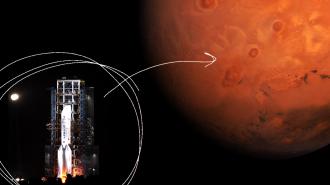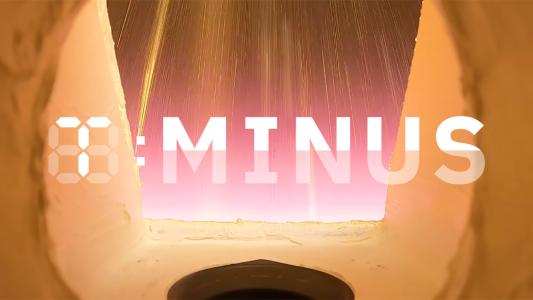China is making progress on a nuclear-powered spacecraft — and if it works as hoped, it could cut the time it takes astronauts to reach Mars in half.
The status quo: Most rockets have chemical propulsion systems, which generate thrust by igniting a mix of fuel and liquid oxygen. This creates an expanding gas that is forced out of the back of the rocket.
These chemical rockets may be the standard today, but they could be replaced by nuclear-powered spacecraft in the future.
A nuclear propulsion system is expected to be 2-5 times more efficient than a chemical one.
Nuclear-powered spacecraft: When atoms split in two, they release a tremendous amount of energy in the form of heat. We already use this nuclear fission to generate electricity on Earth, but aerospace experts across the globe are looking for ways to use it to power spacecraft.
The impact could be farther, faster space travel — a nuclear propulsion system is expected to be 2-5 times more efficient than a chemical one, so instead of needing seven months to reach Mars, astronauts could arrive in three, which would drastically cut their exposure to health threats in space, like cosmic radiation and microgravity.
Space race: In 2023, DARPA contracted Lockhead Martin to develop a nuclear-powered spacecraft, with the goal of having it ready for an in-space demo by 2027. Russia, meanwhile, announced in 2021 that it will have one ready for its first mission in 2030.
Now, researchers in China have reported that a nuclear reactor they’re developing for the Chinese space industry has passed some initial ground tests.
“Our country is in a new era.”
Wu, Y. et al. (2024)
According to their paper, published in the Chinese Academy of Sciences’ peer-reviewed journal Scientia Sinica Technologica, they’ve designed a 1.5 megawatt reactor that can be folded into a package small and light enough to be delivered into space via a traditional chemical rocket.
Once in orbit, the reactor can then be unfurled to propel the craft through space. It could also be used to generate electricity for astronauts on off-world bases (NASA is also developing nuclear reactors specifically for this purpose).
The Chinese team has now tested their reactor design’s cooling system, ability to withstand corrosion, and more. An external power supply was used to provide the heat for these ground-based tests — crucial tests using fission are still to come.
The big picture: China is still behind the US and Russia in the development of nuclear-powered spacecraft, but it’s in the race, and if any of these nations is successful, it could revolutionize space travel.
“Our country is in a new era,” wrote the Chinese team. “We plan to embark on deep space exploration missions such as manned lunar exploration, asteroid exploration, flying by Jupiter, and exploring the edges of the solar system. [Space reactors] will be crucial in these endeavors.”
We’d love to hear from you! If you have a comment about this article or if you have a tip for a future Freethink story, please email us at [email protected].






